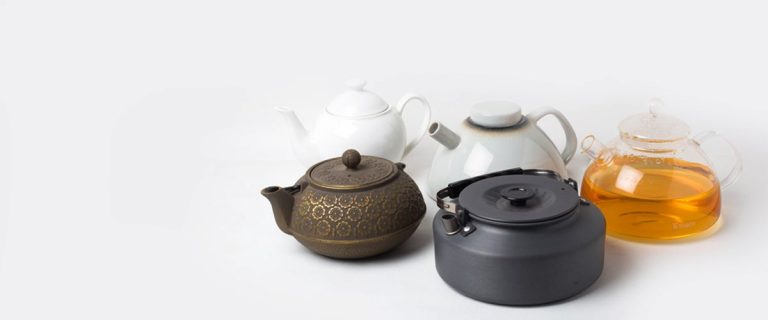Since the first cup of tea was made by accident for Emperor Shennong in 2737 BC, people all over the world have been making tea their own way. The equipment or ‘teaware’ that they use is fascinating in its diversity. From the Chinese gaiwan to the Japanese kanaami, tea makers, infusers, strainers and pots have metamorphosed over the years.
The Chinese Gaiwan
The earliest records of teaware date back to the Chinese West Han Dynasty (206 BC–220 AD). In his book ‘Tong Yue’, Chinese poet Wang Bao notes the use of tea cakes which were dried, pounded, and then mixed with hot water in a clay pot to make tea. In the Tang Dynasty (618–907 AD) the Royals started using tea bowls for infusing and drinking tea, but it wasn’t until the advent of the Ming Dynasty that the gaiwan was perfected. With its perfect shape, ability to retain heat, and the lid to decant loose leaves, the gaiwan was a three-piece tea drinking wonder, and is still considered a prized souvenir today.
The Japanese Kanaami
Kanaami is the traditional Japanese strainer with fine wire meshing that retains even the smallest of tea leaves. This tradition of metal wire weaving has been around for more than a thousand years, ever since the Japanese imbibed tea culture from their southeast Asian neighbors China in the 9th century AD.Tea, Green Tea in particular, has since gone on to become an important part of Japanese culture and tradition.
The Chinese and Japanese were the first cultures to indulge in the process of tea making, but it didn’t take the rest of the world too long to get a whiff of what they were brewing. Tea consumption soon spread to all corners of the globe, and with it came the urgent need for tea making methods to evolve.
While there have been many methods and equipment to brew tea, the long process of discovery seems to have taught us that the ancient methods were indeed the best ones. Here’s a look at how tea makers evolved through the enlightenment period into modern times.
The Teapot
Teapots became popular in China during the Yuan Dynasty (1271-1368 AD) and were probably derived from ceramic kettles and wine pots already in use. The Ming Dynasty saw an even greater use of teapots and in the 17th century, when China started exporting tea to England, the humble teapot made its way overseas.
It wasn’t until 1710, when the Meissen Factory was established in Germany, that Europe started to produce porcelain teaware. Another center for teaware production was Boston, in colonial America, where silver teaware was a beloved possession.
Many of the teapots crafted during this period have become collector’s items. Some of the most expensive tea sets ever sold include the carved Ruby dragon tea set, the Westinghouse set and Chrysanthemum by Tiffany and Co.
The Kettle
The electric kettle gained popularity during the late nineteenth century, and the kettles produced by Compton and Co. in 1891 are believed to be the first of their kind. The electric kettle has seen many changes like the introduction of an inbuilt heating system by the Swan Company in 1922, and the Bakelite kettles of the 1930s. Post-World War II, with metal being in short supply, ceramic kettles became the teaware of choice for British tea lovers.
The Infuser
The infuser made its first appearance around the same time as the kettle. In Britain, silver tea infusers were a great hit during the latter part of the 19th century through the early 20th century. With the Industrial Revolution in full force, production was easy and infusers of various shapes and sizes flooded the market. Some were big enough to brew an entire pot, while single cup infusers were also popular.
How does the modern tea maker work?
The modern tea maker looks and behaves like a cross between the old-fashioned kettle and a teapot. What the tea maker essentially does is combine the heating and infusing processes in a single equipment, so that one doesn’t need an array of machinery to brew some tea.
To make tea in a tea maker, one begins by heating the required quantity of water. Measure out the amount of tea leaves needed – preferably one teaspoon for each cup – and add it to the tea basket or infuser attachment. Pour the hot water, and allow to steep. Remove the tea leaves after infusion and pour into cups. Some tea makers are designed to be placed over the teacup, which allows a valve at the bottom to open and the tea to flow into the cup.
Tea makers are a precise and compact method to brew loose leaf teas. Instead of using multiple infusers, you can brew large amount of tea in single tea maker. Some electric tea makers also come with a whistle that is timed to sound once the steeping time is over, ensuring that your tea is perfect.
Now that you know about the fascinating history of tea making equipment and just how the modern day tea maker works, what do you think your next buy is going to be?

Comments are closed.